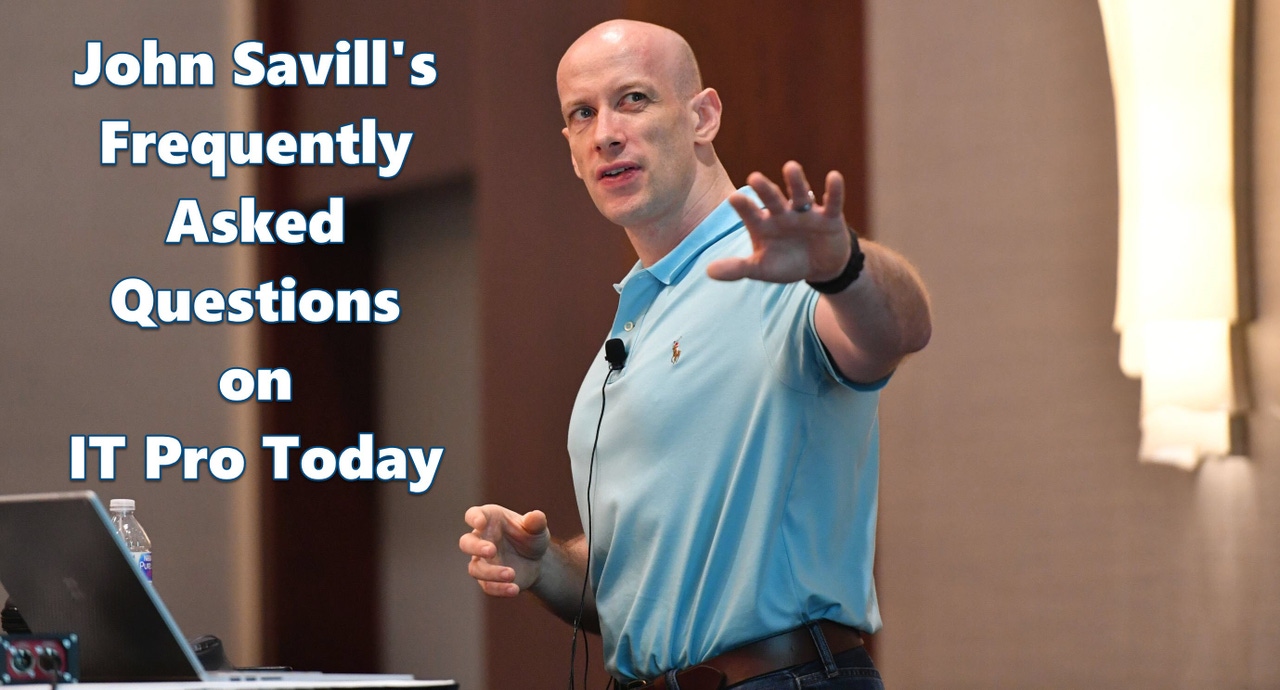Savill's FAQs: Handy Microsoft Edge Keyboard ShortcutsSavill's FAQs: Handy Microsoft Edge Keyboard Shortcuts
Three times a week, John Savill tackles your most pressing IT questions. Today: Learn about performing LDAP writes to objects in Azure AD Domain Services; find Microsoft Edge keyboard shortcuts; and check on upcoming Azure maintenance from within a VM.
January 6, 2018

Three times a week (Monday/Wednesday/Friday), John Savill tackles your most pressing IT questions.
Read through the FAQ archives, or send him your questions via email.
Today: Learn about performing LDAP writes to objects in Azure AD Domain Services; find Microsoft Edge keyboard shortcuts; and check on upcoming Azure maintenance from within a VM.
Q. Can I perform LDAP writes to objects in Azure AD Domain Services?
A. Not really. The LDAP connection is read-only. The only exception is if you create custom organizational objects (OU) and create objects in those OUs that are not synchronized from Azure AD. Once you create those objects, you can write to them via LDAP.
Q. Are there Microsoft Edge keyboard shortcuts?
A. Absolutely and for the most part they are exactly the same as for Internet Explorer, for example:
Ctrl + - Move to that tab, e.g. Ctrl + 3 moves to third tab
Ctrl + F4 or Ctrl + W - Close current tab
F5 - Refresh current page
Alt + D - Got to address bar
Ctrl + F - Find on page
Ctrl + I - View Favorites
Ctrl + T - Open new tab
A full list of shortcuts for IE can be found at https://support.microsoft.com/en-us/help/15357/windows-internet-explorer-11-keyboard-shortcuts which pretty much all work as Microsoft Edge Keyboard Shortcuts.
Q. How can I check from within a VM when any upcoming Azure maintenance will occur?
A. Maintenance information is available via the Azure fabric through the 169.254.269.254 endpoint. Below is some example PowerShell to connect to the endpoint and view the information:
$url = "http://169.254.169.254/metadata/scheduledevents?api-version=2017-03-01"
$data = Invoke-RestMethod -Uri $url -Headers @{'Metadata'='true'} -Method Get
If there is any planned maintenance the $data would have an array of events which would include an EventType such as a reboot, redploy or freeze, a status and a planned time.
Read more about:
MicrosoftAbout the Author
You May Also Like
.png?width=100&auto=webp&quality=80&disable=upscale)
.png?width=400&auto=webp&quality=80&disable=upscale)






.jpg?width=700&auto=webp&quality=80&disable=upscale)
